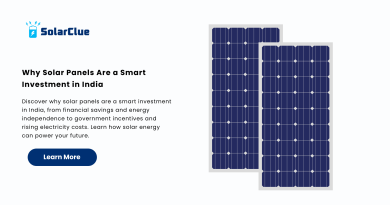How To Assemble Solar Panel System?
Assembling a solar panel system requires careful planning, the right components, tools, and adherence to safety protocols. This guide provides step-by-step instructions for installing solar panels, inverters, batteries, and connecting the system to the grid or an off-grid setup. It also covers troubleshooting tips, safety precautions, and government regulations.
Table of Contents
- 1 Components of a Solar Panel System
- 1.0.1 Tools and Equipment Needed for Installation
- 1.0.2 Safety Precautions and Guidelines
- 1.0.3 Step-by-Step Installation Process
- 1.0.4 Troubleshooting Common Installation Issues
- 1.0.5 Government Regulations and Permits
- 1.0.6 The Role of Professional Installation Services
- 1.0.7 Case Studies of Successful Solar Panel Installations
- 1.0.8 Tips for Maximizing System Performance and Efficiency
- 1.1 Frequently Asked Questions (FAQs)
- 1.2
Components of a Solar Panel System
A typical solar panel system consists of several key components:
| Component | Description |
|---|---|
| Solar Panels | Capture sunlight and convert it into electricity. |
| Inverter | Converts the DC electricity generated by the panels into AC electricity for home use or grid connection. |
| Batteries (Optional) | Store excess energy for use during non-sunny periods or power outages. |
| Mounting/Racking System | Secures the solar panels to the roof or ground. |
| Wiring and Connectors | Connects all components, enabling the flow of electricity. |
| Charge Controller (for off-grid systems) | Regulates the voltage and current coming from the solar panels to the batteries. |
| Monitoring System | Tracks the performance of the solar panel system in real-time. |
Tools and Equipment Needed for Installation
Before starting the installation, gather the following tools and equipment:
| Tool/Equipment | Purpose |
|---|---|
| Drill and Drill Bits | For mounting the racking system to the roof or ground. |
| Wrenches and Screwdrivers | To tighten bolts and screws on the mounting system and electrical components. |
| Wire Stripper and Cutter | For preparing the electrical wiring connections. |
| Multimeter | To measure voltage, current, and ensure electrical connections are correct. |
| Safety Harness and Ladder | Essential for safe rooftop installations. |
| Level | Ensures the solar panels are mounted correctly and evenly. |
| Conduit and Clamps | For securing wiring and protecting it from environmental elements. |
| Personal Protective Equipment (PPE) | Includes gloves, safety glasses, and hard hats for safety during installation. |
Safety Precautions and Guidelines
Safety is paramount when assembling a solar panel system. Follow these guidelines:
- Turn Off Power: Ensure all power sources are turned off before starting any installation work.
- Use PPE: Always wear gloves, safety glasses, and a hard hat when working.
- Secure Ladders and Harnesses: Use a stable ladder and wear a harness when working on roofs.
- Check Weather Conditions: Avoid installing in wet or windy conditions to prevent accidents.
- Handle Panels with Care: Solar panels are fragile; handle them carefully to avoid cracks or damage.
- Follow Electrical Codes: Ensure all wiring and connections comply with local electrical codes and standards.
Step-by-Step Installation Process
Here’s a general overview of the solar panel installation process:
1. Site Assessment and Design:
Assess the site for sunlight exposure, shading, and roof orientation.
Design the system layout, including panel placement, wiring routes, and inverter location.
2. Mounting the Racking System:
Install the racking system on the roof or ground. Ensure it is level and securely anchored.
Attach the solar panel mounts to the racking system, leaving enough space for airflow under the panels.
3. Installing Solar Panels:
Place the solar panels on the mounts and secure them using bolts and clamps.
Connect the panels in series or parallel, depending on the system design.
4. Wiring the System:
Connect the solar panels to the inverter using appropriate wiring and connectors.
If using a battery system, connect the panels to the charge controller, then to the batteries, and finally to the inverter.
5. Inverter Installation:
Mount the inverter close to the main electrical panel for easy integration with the home’s electrical system.
Connect the inverter to the solar panels and the electrical panel.
6. Connecting to the Grid or Off-Grid:
For grid-tied systems, connect the inverter to the grid via the main electrical panel.
For off-grid systems, connect the inverter to the battery bank and the home’s electrical system.
7. System Configuration and Testing:
Configure the inverter settings according to the system design.
Test the system using a multimeter to ensure all connections are correct and the system is generating power.
8. Monitoring and Maintenance:
Set up the monitoring system to track performance.
Schedule regular maintenance checks to ensure the system operates efficiently.
Troubleshooting Common Installation Issues
If you encounter problems during or after installation, consider these troubleshooting tips:
| Issue | Potential Cause | Solution |
|---|---|---|
| No Power Output | Loose connections, faulty inverter, or improper wiring. | Check all connections, ensure the inverter is functioning, and verify wiring diagrams. |
| Low Power Output | Shading, soiled panels, or incorrect panel orientation. | Clean panels, adjust orientation, and remove shading obstructions. |
| Inverter Errors | Incorrect configuration, grid issues, or faulty wiring. | Reconfigure the inverter settings, check grid stability, and inspect wiring. |
| System Shutdowns | Overheating, overload, or battery issues. | Check for proper ventilation, reduce load, and inspect batteries. |
Government Regulations and Permits
Compliance with local regulations and obtaining the necessary permits is crucial:
- Building Permits: Required for structural modifications and electrical work.
- Electrical Codes: Ensure compliance with national and local electrical codes.
- Grid Connection Approval: Obtain approval from the utility company for grid-tied systems.
- Inspection Requirements: Systems often require inspection before being connected to the grid.
The Role of Professional Installation Services
While DIY installation is possible, professional services offer several advantages:
- Expertise: Professionals ensure the system is designed and installed correctly.
- Safety: Reduces the risk of accidents and ensures compliance with safety standards.
- Warranty and Support: Professional installations often come with warranties and post-installation support.
- Efficiency: Professionals can complete the installation faster and more efficiently.
Case Studies of Successful Solar Panel Installations
Learning from successful installations can provide valuable insights:
- Case Study 1: A residential installation in Kerala used high-efficiency panels and an optimized layout to maximize energy production in a limited space, achieving energy independence within three years.
- Case Study 2: A commercial installation in Gujarat integrated a battery storage system, enabling the business to reduce grid reliance and save significantly on energy costs.
Tips for Maximizing System Performance and Efficiency
To get the most out of your solar panel system, follow these tips:
1. Optimal Placement: Ensure panels are placed to receive maximum sunlight throughout the day.
2. Regular Cleaning: Keep panels clean and free of debris to maintain efficiency.
3. Routine Inspections: Regularly check for loose connections, wear and tear, and system performance.
4. Upgrade Components: Consider upgrading to more efficient inverters or adding a battery system as technology advances.
5. Monitor Performance: Use a monitoring system to track energy production and identify issues early.
Frequently Asked Questions (FAQs)
1: What are the essential components of a solar panel system?
A: A solar panel system typically includes solar panels, an inverter, mounting/racking system, wiring, and optionally, batteries and a monitoring system.
2: What tools are required for installing a solar panel system?
A: Essential tools include a drill, wrenches, wire stripper, multimeter, safety harness, ladder, level, conduit, and PPE.
3: How do I ensure safety during solar panel installation?
A: Turn off all power sources, use PPE, secure ladders and harnesses, and follow electrical codes.
4: What should I do if my solar panel system isn’t generating power?
A: Check connections, test the inverter, inspect wiring, and ensure the system is properly configured.
5: Are permits required for solar panel installation?
A: Yes, building permits, electrical codes compliance, and grid connection approval are often required.
6: Can I install a solar panel system myself?
A: While possible, professional installation is recommended for safety, efficiency, and warranty purposes.
7: How do I maintain my solar panel system?
A: Regularly clean panels, inspect connections, and monitor system performance for optimal efficiency.
8: What is the role of an inverter in a solar panel system?
A: The inverter converts DC electricity generated by the panels into AC electricity for home use or grid connection.
Assembling a solar panel system requires careful planning, the right tools, and a focus on safety. By following this guide, you can ensure your system is installed correctly and operates efficiently, providing reliable renewable energy for years to come.
Here at SolarClue®, we offer a smart, practical, and “beautiful” solution. You will be answered for all the questions related to Solar.
We provide all kinds of brands that are the Best Solar panels in India.
If you are the one who is planning for the solar power system. Don’t hesitate to contact our team!
Looking forward to empowering you with solar energy, just like hundreds of our other clients!


